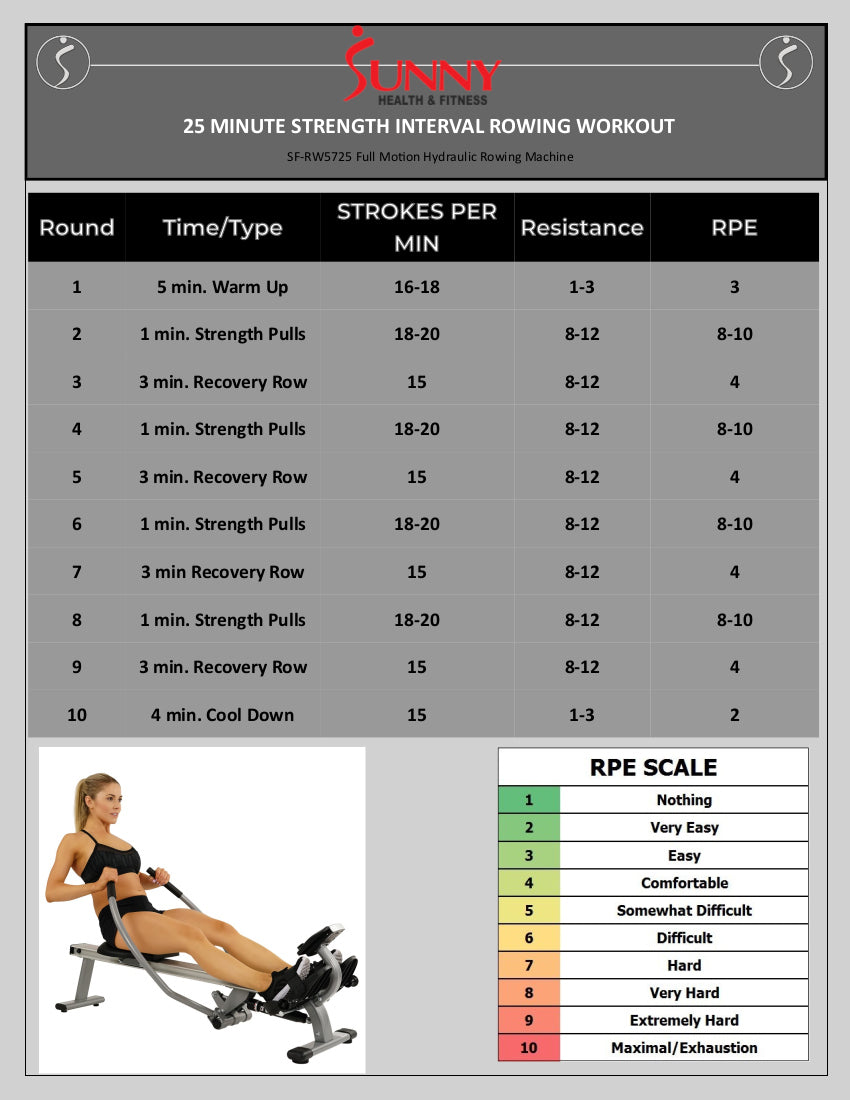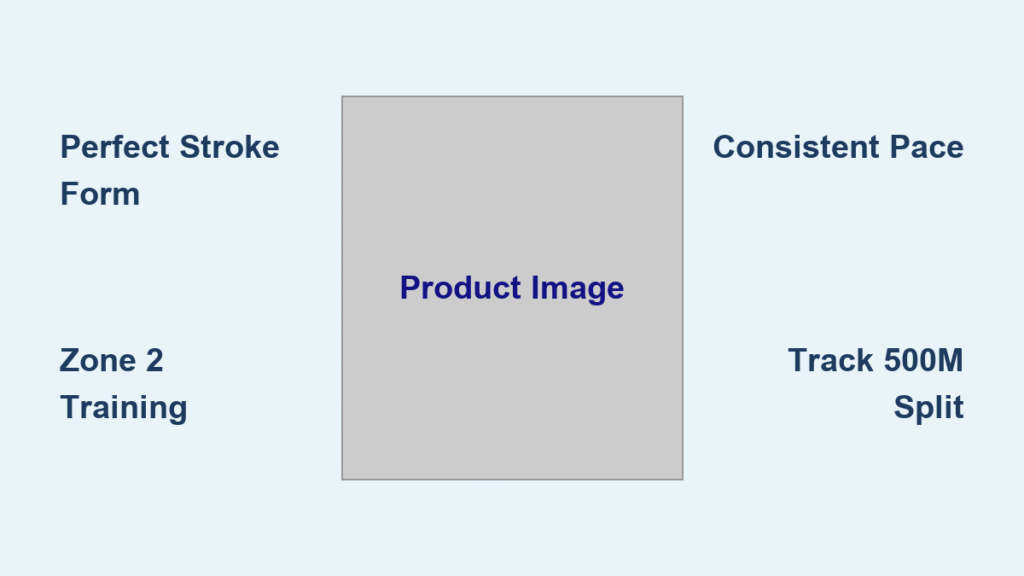You’ve got your rowing machine sitting in the corner, but are you truly harnessing its potential? Most exercisers treat rowing as a simple cardio machine, unaware that a properly structured rowing machine aerobic workout engages 86% of your body’s musculature while delivering superior cardiovascular benefits with minimal joint stress. The difference between mediocre results and transformative fitness gains comes down to understanding how to leverage this powerhouse equipment correctly.
Unlike running or cycling that isolate muscle groups, rowing creates simultaneous cardiovascular and strength stimulus through its unique stroke mechanics. When you implement the right intensity zones, stroke techniques, and progression strategies, your rowing machine aerobic workout becomes the most efficient tool for building endurance, burning fat, and improving metabolic health. This guide reveals the exact protocols used by competitive rowers and fitness professionals to turn 20 minutes on the erg into a complete fitness transformation.
Why Rowing Outperforms Traditional Cardio Methods
Rowing machine aerobic workouts deliver unmatched full-body conditioning that leaves treadmills and ellipticals in the dust. Every stroke activates your quads, glutes, core, back, and arms simultaneously while maintaining the low-impact profile essential for sustainable training. This comprehensive muscle recruitment creates higher caloric expenditure and superior cardiovascular adaptations compared to single-plane exercises.
Scientific research confirms that interval-style rowing significantly improves both cardiovascular fitness and insulin sensitivity—making it particularly effective for metabolic health. The beauty of a rowing machine aerobic workout lies in its dual energy system stimulus: you’re not just burning calories during exercise, but enhancing your body’s oxygen utilization capacity for hours afterward. This metabolic advantage means you’ll continue reaping benefits long after you’ve stepped off the machine.
Perfect Your Rowing Form for Maximum Efficiency
Master the Four-Phase Stroke Sequence
Your rowing machine aerobic workout effectiveness lives or dies by your technique. A proper stroke follows this precise sequence:
Catch Position
– Hinge forward with torso at 1 o’clock position
– Keep shins vertical, arms straight, handle hovering over ankles
– Maintain tall spine and braced core
Drive Phase
– Initiate with explosive leg extension (providing 60% of total power)
– Keep arms straight until legs near full extension
– Complete stroke with elbows past ribs, handle at lower sternum
Finish Position
– Legs fully extended with torso reclined 10-15 degrees
– Handle lightly touches sternum with flat wrists
– Shoulders down and back
Recovery Sequence
– Extend arms first → hinge torso forward → bend knees → slide forward
– Maintain 3:4 drive-to-recovery ratio for optimal aerobic pacing
Breathing Techniques That Boost Performance
Sync your breathing to maximize oxygen delivery during your rowing machine aerobic workout:
– Inhale during the recovery phase as you return to the catch
– Exhale powerfully during the drive phase for maximum force production
– Target stroke rates of 18-24 SPM for foundational aerobic work
Heart-Rate Zones That Deliver Real Results

Your rowing intensity determines which energy systems develop. Calculate your zones using 220 minus your age, then train strategically:
| Zone | Intensity | Primary Purpose | Optimal Stroke Rate |
|---|---|---|---|
| Zone 2 | 60-69% max HR | Aerobic base building, fat burning | 18-22 SPM |
| Zone 3 | 70-79% max HR | Aerobic threshold development | 22-26 SPM |
| Zone 4 | 80-89% max HR | Lactate threshold improvement | 26-30 SPM |
Zone 2 should form the foundation of your rowing machine aerobic workout program—aim for 70-80% of your total training time in this zone to build sustainable endurance without excessive fatigue.
5 Proven Rowing Machine Aerobic Workout Protocols

Steady-State Fat Burning Session
Protocol: 20-45 minutes continuous at 60-70% max HR
Pacing: 500m split 8-12% slower than your 5k personal record
Progression: Start with 6km total distance, adding 1-2km weekly
Pro Tip: Focus on smooth, consistent drive phases rather than speed
4 x 1250m Aerobic Intervals
Structure: 4 rounds of 1250m at 5k race pace
Rest: 3-5 minutes between pieces
Goal: Maintain splits within 2-3 seconds per rep
Why It Works: Builds aerobic capacity while teaching pacing discipline
Sweet-Spot Endurance Builder
Work: 2 x 20 minutes at 75% max HR
Rest: 3 minutes between blocks
Total Time: 45 minutes including warmup
Key Cue: Should feel challenging but sustainable—like a conversation pace
Fartlek Aerobic Mix
Structure: 40 minutes continuous with intentional pace variations
Pattern: 4 minutes at 20 SPM followed by 1 minute at 26 SPM
Intensity: Fluctuate between 65-80% max HR
Benefit: Develops metabolic flexibility and mental toughness
10-20-30 Micro-Intervals
Protocol: 10″ all-out sprint / 20″ moderate pace / 30″ easy recovery
Structure: Repeat 5 times for one complete block
Total: 3-4 blocks with 2-minute rests between
Result: Dramatically improves both aerobic and anaerobic capacity
21-Day Progressive Rowing Plan
Beginner Track (3 Days/Week)
- Week 1: 3 x 10 min steady-state at Zone 2 + form drills
- Week 2: 4 x 8 min intervals at 65% max HR with 2-min rests
- Week 3: 20 min steady-state + 4 x 500m finisher at 70% effort
Intermediate Track (3 Days/Week)
- Monday: 30 min steady-state @ 65-70% max HR
- Wednesday: 4 x 1500m @ 5k pace, 4 min rest between
- Friday: 4 blocks of 10-20-30 micro-intervals
Advanced Track (3 Days/Week)
- Monday: 45 min steady-state @ 70-75% max HR
- Wednesday: 5 x 2000m with 5-second slower 500m split than 2k PR
- Friday: 4 x 30:30 all-out efforts with 30-second rests + 3k cooldown
Critical Metrics to Track Your Progress
Monitor these key indicators to ensure your rowing machine aerobic workout program delivers results:
| Metric | Testing Frequency | Target Improvement |
|---|---|---|
| 500m Split Time | Weekly | 2-4 seconds faster after 4 weeks |
| 2k Time Trial | Every 3 weeks | Elite standard: 6:30-7:30 (women), 6:00-7:00 (men) |
| 60-Minute Distance | Monthly | Add 1-2 kilometers per month |
| Heart Rate Recovery | After each intense session | ≥30 bpm drop in first minute |
Common Form Mistakes That Sabotage Your Results

Arm-First Pulling: Starting the stroke with arms instead of legs wastes 60% of potential power and strains shoulders. Always initiate with explosive leg drive.
Improper Damper Setting: Setting resistance above 5 for aerobic work creates unnecessary fatigue. Use settings 3-5 to simulate proper on-water resistance.
Inconsistent Stroke Rate: Fluctuating between 18-30 SPM disrupts rhythm. Pick a target rate for your workout and maintain it within 2 strokes.
Poor Foot Strap Placement: Straps positioned too high on the foot prevent proper leg drive. Secure straps across the metatarsals with slight heel lift at the catch.
Essential Maintenance for Peak Performance
Keep your rowing machine functioning optimally with these simple routines:
– After each use: Wipe down monorail and handle to prevent buildup
– Weekly: Check footplate screws and chain tension
– Monthly: Apply lubricant to chain and inspect handle cord for fraying
– Quarterly: Calibrate monitor and test damper functionality
Final Takeaway: A properly executed rowing machine aerobic workout delivers unparalleled full-body conditioning with minimal joint stress. Start with Zone 2 steady-state sessions to build your aerobic base, then strategically incorporate interval protocols as your fitness improves. Track your 500m split times and heart rate recovery—these two simple metrics provide all the feedback you need to continuously progress. Remember: consistency with proper technique trumps intensity every time. Your rower isn’t just another cardio machine—it’s the most comprehensive fitness tool you’ll ever own when used correctly.




